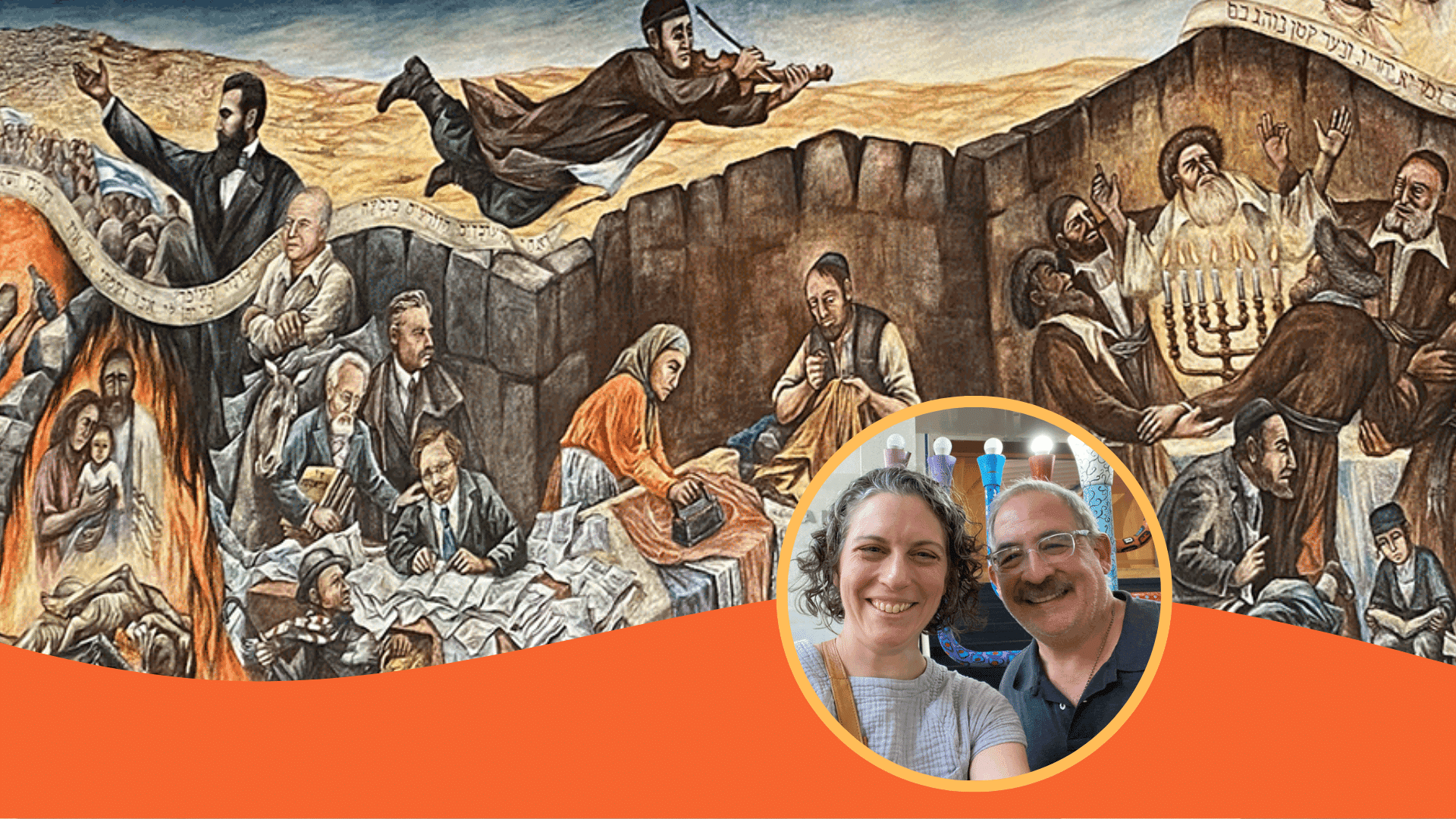When Jewish Heritage Travel staff member Sarah Litvin visited Mexico City for a friend’s birthday, she decided to take advantage of the opportunity to meet up with the local guide for our tours there, Jacobo Raijman. He suggested a visit to the JCC.
On the sixth day of Hanukkah, and my last day visiting Mexico City, I received a message from Jacobo Raijman: “I will pick you up and take you to the JCC. It’s a must-see.”
As the newest member of the Jewish Heritage Travel team, I had hoped to meet up with Jacobo to hear more about our upcoming Mexico City itinerary, and I was very grateful that we were able to squeeze in a few hours together before I left. But, having grown up in a Boston suburb, I could not fathom why a JCC would be a “must-see.”
He picked me up, and, sensing my hesitation at his choice, he said, “Just wait, you’ll see!” Lane shifting, he continued, “See this? It’s a dedicated lane from the highway just for JCC access.”
Mexico City’s Centro Deportivo Israelita, or JCC, was built in 1950 but has expanded and been updated several times since; it now encompasses a campus that stretches more than 900,000 square feet — nearly as big as a New York City block. It truly feels like a city unto itself. Among much else, the center boasts a swimming pool that is specially sized and designed to accommodate all Olympic-pool sports; dozens of tennis courts, basketball courts, and soccer fields; as well as archives; Hebrew, Yiddish, and children’s libraries; a bank; a food court; and rooms dedicated to women’s gymnastics equipment and full-scale women’s Olympic gymnastics equipment — not to mention a Weizman Institute-designed outdoors children’s science garden!
It was relatively quiet on the day of our visit, since most Mexican families leave town between Christmas and New Year’s. But most days after school and work, the center is packed with activities and well-attended by its more than 18,000 members.
Jacobo explained that the center is a “must-see” because, in addition to the impressive facilities, visitors can feel the energy and strength of Mexico City’s Jewish community, many of whom opt to fight traffic to get here and spend time with the community rather than attending their local gyms. “Children come here after school and can just run free,” he said. “They can get a snack, take a class, practice sports, or do their homework. Many of us feel that we grew up here.”
“Wow!” I said, at every turn as the impressive facilities continued to reveal themselves. Jacobo explained to me that during the Jewish Heritage Travel visit, a leader from Mexico’s Central Jewish Committee would speak to the group about the special structure and role of the formal Jewish community in Mexico.
Jacobo was absolutely right to bring me there. In so many parts of the world, Jewish-oriented trips focus on discovering an epic Jewish past, while, of course, also paying respects to the small and mighty contemporary community. By contrast, in Mexico City, the Jewish community’s energetic present and ambitious future is what is truly epic.
As we were leaving, I saw a large count-down clock near the door and asked what it was. “It’s the number of days, hours, and minutes until the next Macabbiah games!” Jacobo exclaimed. What a fitting end to my Hanukkah visit to this strong Jewish community.






